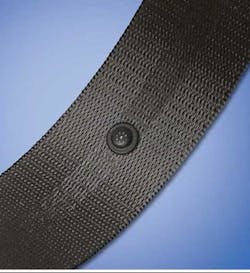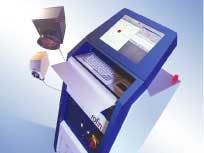The potential of welding polymers
Laser welding of polymers has become an alternative to conventional technologies because the advantages of perfect surfaces, flexibility of welding seam contours, and minimal thermal and mechanical power input are increasingly benefiting new designs. Application examples can be found, among others, in the medical device, automotive, electronics, human care, and household device industries.
Market experts say that 10 percent of all polymer joints will one day be laser welded. Currently a switch-over can be seen: laser installations are increasingly turned into industrial mass production plants for high-quality components, where the focus lies on automation concepts and the trend of welding colored components.
Overlap welding has taken over the leading role in the market for laser welding of polymers. The two surfaces to be joined are positioned on top of each other and the laser beam penetrates the upper surface and is absorbed by the lower. The melt zone is buried within the component and does not affect the outer surface.
Laser technology features numerous procedure-related advantages in comparison to conventional joining techniques, such as gluing, ultrasonic, vibration, or heating element welding. Most emphasis lies here on flexibility and consistent quality of welds. The quality of a laser-welding seam can usually compete with any conventional technology. Tensile shear force and pressure cycle tests demonstrate that a laser weld is at least as strong as a comparable ultrasonic welding seam. Moreover, laser welding does not cause any micro-particles. This is a significant advantage in particular for fluid reservoirs and medical components.
As the laser transfers the melting energy, tightly localized, very fine structures with welding seams extremely close to heat-sensitive components can be realized. Also, there is no distortion and no melt ejection with laser welding—what you weld is what you want.
The laser is one of the most flexible tools in industrial material processing. Due to the fine focus and the flexible beam delivery, new designs can be realized within a short time without causing expensive changes on the tool. As the laser does not require any mechanical device, tools can be designed very simple and cost-effective.
Lasers work without contact and do not show any wear. The quality of the weld remains consistent if the component shows the corresponding quality. Moreover, the components do not have to be pre-processed before welding. This fact also contributes to a constant welding quality. It has been proven that the reject rate with laser welding can be reduced to an attractive minimum compared to conventional technologies.
The color or pigment of the components is a key factor contributing to a high-quality polymer weld. It has to fulfill two aspects simultaneously: the requirements of the colorists and the above mentioned transmission and absorption characteristics for the laser beam. The laser wavelengths used in polymer welding are all beyond the visible spectrum in the near IR range (808, 940, 1064 nm), so that the right choice of color allows the separation of the visual and laser specific characteristics (see Fig.1).
The efficiency of laser welding can enormously be improved if the component is already developed with respect to a laser-specific construction. There are the four basics for successful laser welding: laser-specific construction/gap width, appropriate choice of polymer and pigment, appropriate choice of laser, and pressure/component clamp.
As the upper joint partner is heated only indirectly, an efficient heat transfer is essential for a successful weld. Gaps between the two components are heat barriers and can be closed only by thermal expansion of the polymer. A rule of thumb says that the gaps in a 1- to 2mm-wide welding seam between the two components should not be wider than 100 microns (in smaller welding seams correspondingly less).
There is no general formula of success for choosing the appropriate polymers and additional pigments. However, tests and experience have shown, that almost all kinds of thermoplastics and thermoplastic elastomers can be welded—in many cases even with a proportion of glass fiber of up to 30 percent. Even different polymer materials can be welded together, provided that they are chemically compatible and the melting temperature ranges match. For many materials there is a rule of thumb: materials that can be welded with ultrasonic methods can also be laser welded.
Laser choice
The right choice of the laser system depends mainly on the absorption characteristics of pigments as well as on the seam width required. As a guide, for seam widths below 1.0 mm or scanner head applications (plane welding seam geometries) the Nd:YAG laser is the optimal laser, whereas diode lasers are more appropriate for wider welding seams, circular seams, or simple spot welds.
Rofin/Baasel Lasertech, (Starnberg, Germany) a producer of lasers and laser systems, has a cooperation agreement with the master batcher Treffert (Bingen, Germany), which has already generated numerous industrial applications.
Currently there are many standard solutions for quite a number of tasks (for example, transparent/black, black/black, or selected colored/colored arrangements), however, some have to be solved with customized adjustments. Figure 2 overviews the complexities arising in the individual arrangements. Applications using black are common in the automotive industry (under the hood) and colored applications can be found mainly in the automotive (interior design), electronics, and household device industries, whereas transparent or applications with white dominate in the medical device technology (see Figures 3 and 4).
The Rofin StarWeld Diode laser (see Figure 5) is specifically designed for polymer welding requirements. Optionally either diode lasers (808, 940 nm) or Nd:YAG lasers (1064 nm) can be used. The power output ranges up to 150 W and is adequate for most industrial applications. Either type of laser can be equipped with fixed optics or scanner heads allowing optimal welds of all component geometries.
Dr. Thomas Renner ([email protected]) is division manager, innovation and marketing with Rofin/Baasel Lasertech and Dr. Michel Sieffert ([email protected]) is head of R&D for Treffert. In the U.S. contact Rofin-Sinar Inc. at tel. (734) 455-5400.






